Unlocking the 4 Expert Roof Safety Reminders in Summer
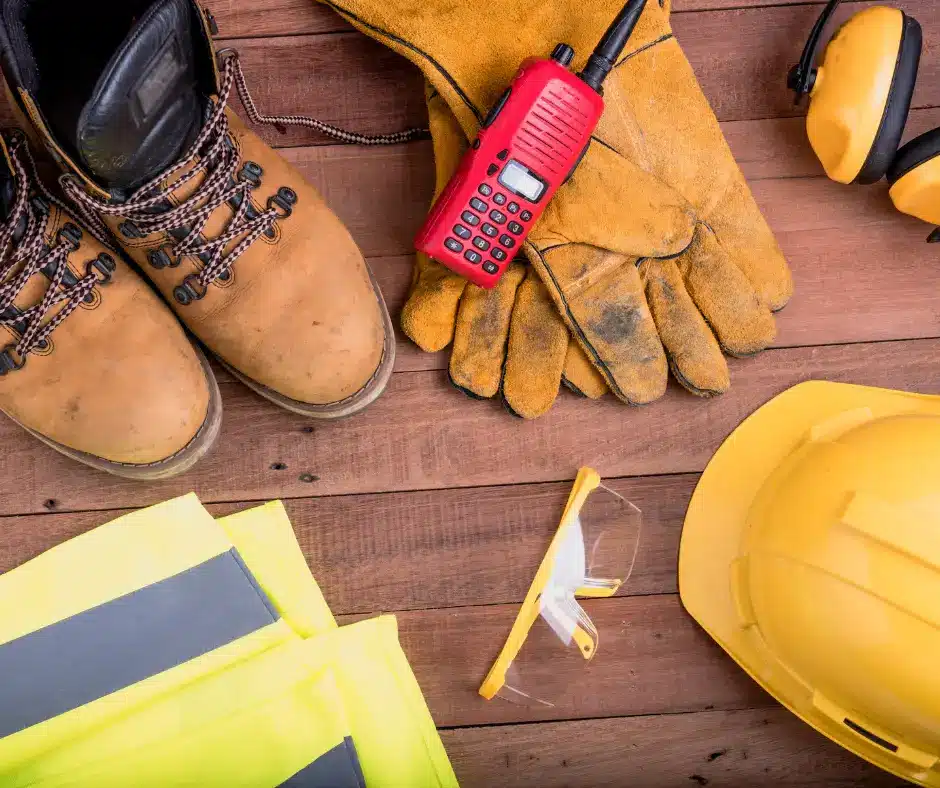
The summer sun brings more than just warmth. As you bask in the glow on your roof deck, consider five vital roof safety steps.
Don’t let an accident ruin your summer.
Statistics show a rise in falls and injuries when homeowners take to the heights. We outline expert tips to avoid disaster.
Follow these reminders, Winnipeg, and keep your home improvement projects safe this season. Summer is for relaxation, not the ER.
The Importance of Roof Safety Equipment and Training
As a Winnipeg homeowner, your roof is one of the most important parts of your house. According to studies, over 10% of residential roof injuries require medical attention, so safety should be a top priority for any roof work.
Proper Safety Gear
When working on your roof, always wear slip-resistant shoes, protective eyewear, a hard hat, and work gloves. Your safety harness should be properly fitted and securely attached for fall protection at all times.
Comprehensive Training
Even with the right gear, roof work can be extremely dangerous if you are not properly trained.
All Weather Exteriors roofing experts have years of training and certifications to ensure your roof work is done safely and professionally. Our expertise can help identify potential hazards and prevent injury. For DIY work, take a roof safety course to learn critical skills.
Scheduling Regular Inspections
In addition to safety equipment and training, schedule regular professional inspections of your roof, especially after severe weather.
Small issues can turn into big problems if left unaddressed. All Weather Exteriors’ certified inspectors can spot problems early and recommend necessary repairs to protect your home and prevent injury.
By following essential roof safety practices, homeowners in Winnipeg can avoid becoming another statistic.
Make safety, training, and regular inspections a priority for your roof and you’ll have peace of mind that you’ve done everything possible to protect your home and family. Your roof is too important not to invest in safety.
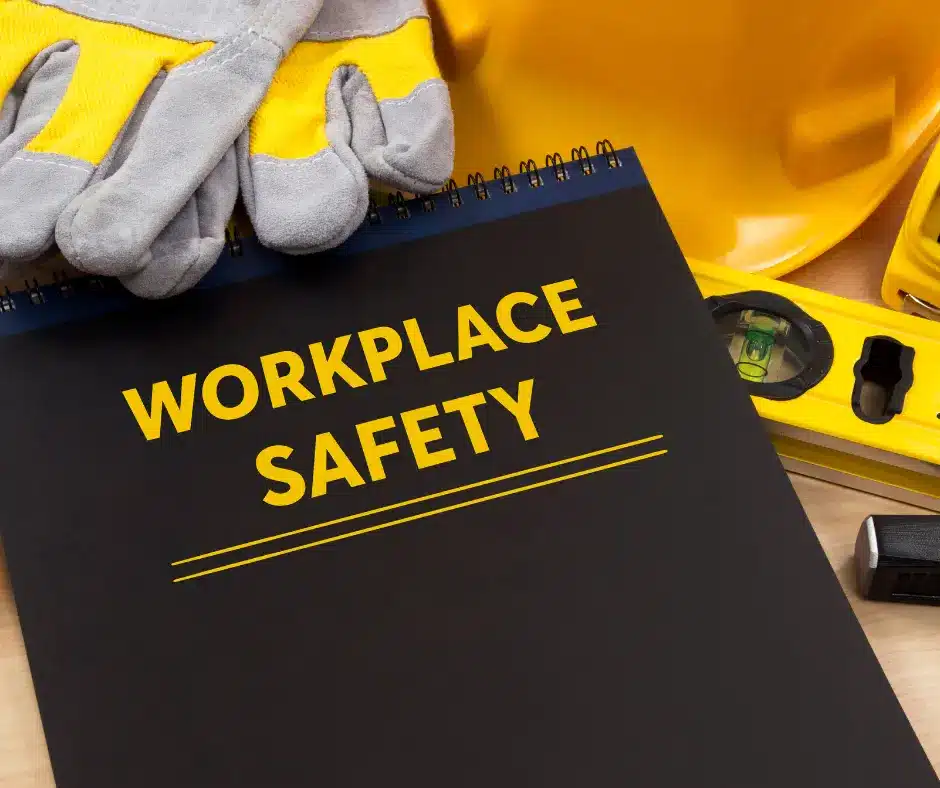
CCOHS Guideline for Roofing Safety Standards
According to the Canadian Centre for Occupational Hazards and Safety (CCOHS), roofing work is among the most hazardous construction activities.
As a Winnipeg homeowner hiring a contractor for roof repairs or replacement this summer, you’ll want to ensure they follow CCOHS’s strict safety standards.
CCOHS requires safety training for all roofing workers to prevent slips, trips, and falls – the primary causes of roofing deaths. Proper use of fall protection like guardrails, safety nets, and personal fall arrest systems with harnesses is mandated when working at heights over 6 feet.
Roofers must also wear rubber-soled shoes for traction, protective eyewear, and clothing. Loose materials, tools, and equipment left on the roof can lead to slips and falls, so the work area must remain clear.
In extreme heat, CCOHS mandates roofers take breaks to prevent heat-related illness. Roofing work in direct sunlight can lead to heat stress, so roofers should drink plenty of fluids and be monitored for symptoms like dizziness or nausea.
Review the safety plan to ensure proper protective equipment, training on fall prevention and heat stress, and emergency procedures are included. Don’t be afraid to ask the roofing crew directly about their safety certifications and training. Your diligence could help save a life.
With CCOHS-compliant safety standards rigorously followed, you’ll have peace of mind that your new roof is being installed properly and that the workers making it happen will go home safe at the end of the day.
Safety for all should be the top priority in any roofing project.
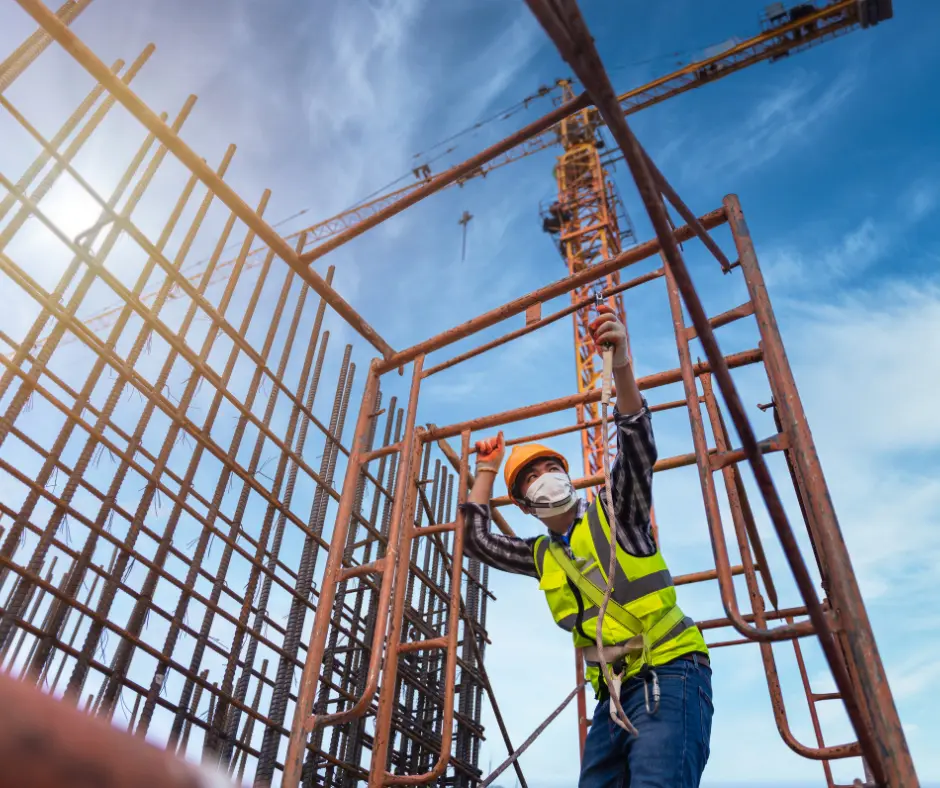
Top 5 Roof Safety Hazards to Watch Out for This Summer
Falling from heights
Working on rooftops always comes with the risk of falling from heights, especially in summer when surfaces may be slippery.
According to the Bureau of Labor Statistics Census of Fatal Occupational Injuries (CFOI), falls are the leading cause of death in the construction industry, accounting for about 38% of fatal injuries.
So take proper precautions like wearing proper safety gear including fall protection harnesses.
Slipping on loose roof materials
Roof surfaces contain loose materials like gravel or shingles that can cause slips and falls, especially when wet. A study shows wet, sloped roofs can be slick even with proper footwear. Exercise caution by clearing walkways, using traction aids like cleats, and avoiding loose materials when possible. Secure or remove them to reduce tripping hazards.
Heat-related illnesses
Working on rooftops in summer exposes you to extreme heat which can lead to heat stroke or exhaustion. The labor-intensive nature of roof work also contributes to overheating.
According to the Canadian Centre for Occupational Health and Safety, heat stress causes approximately 600 deaths and tens of thousands of hospitalizations each year in Canada.
Stay hydrated, take breaks in shaded areas, and be on alert for signs of heat-related illness in yourself and co-workers.
Sun exposure
Long hours of exposure to the sun’s UV radiation in summer can cause sunburn, and skin damage, and increase the long-term risk of skin cancer. The higher elevation of rooftops also intensifies sun exposure.
Protect yourself by wearing UV-protective clothing, and sunglasses, and applying sunscreen with an SPF of at least 30, especially during the middle of the day when the sun is strongest.
Eye strain
The bright sunlight reflecting off roof surfaces in summer can cause eye strain, damage, and long-term vision issues.
Wear sunglasses that block 100% of UVA and UVB rays to shield your eyes. Give your eyes a break by looking away from the sun and focusing on distant objects every 20 minutes or so. Staying hydrated and taking periodic shade breaks will also help reduce eyestrain from glare and intense light.
Following these hazard-specific safety tips will help ensure a safe and productive summer on the job. Your safety should be the top priority, so take the necessary precautions and never hesitate to speak up if conditions seem unsafe.
Proper Use and Inspection of Fall Protection Equipment
To ensure maximum safety while working on rooftops this summer, you must properly use and frequently inspect your fall protection equipment.
According to studies by the Occupational Safety and Health Administration (OSHA), fall protection violations were the leading cause of roofing contractor deaths in 2020.
Harnesses
As a resident of Winnipeg, you know harsh summer storms can arise without warning. Your safety harness is a critical piece of equipment that could save your life if you lose your footing on a wet or windy rooftop.
All Weather Exteriors recommends full-body harnesses for maximum protection. Inspect your harness for any fraying, damage or loose straps before each use and follow the manufacturer’s guidelines for proper fitting. An ill-fitting harness will not properly distribute your weight in the event of a fall.
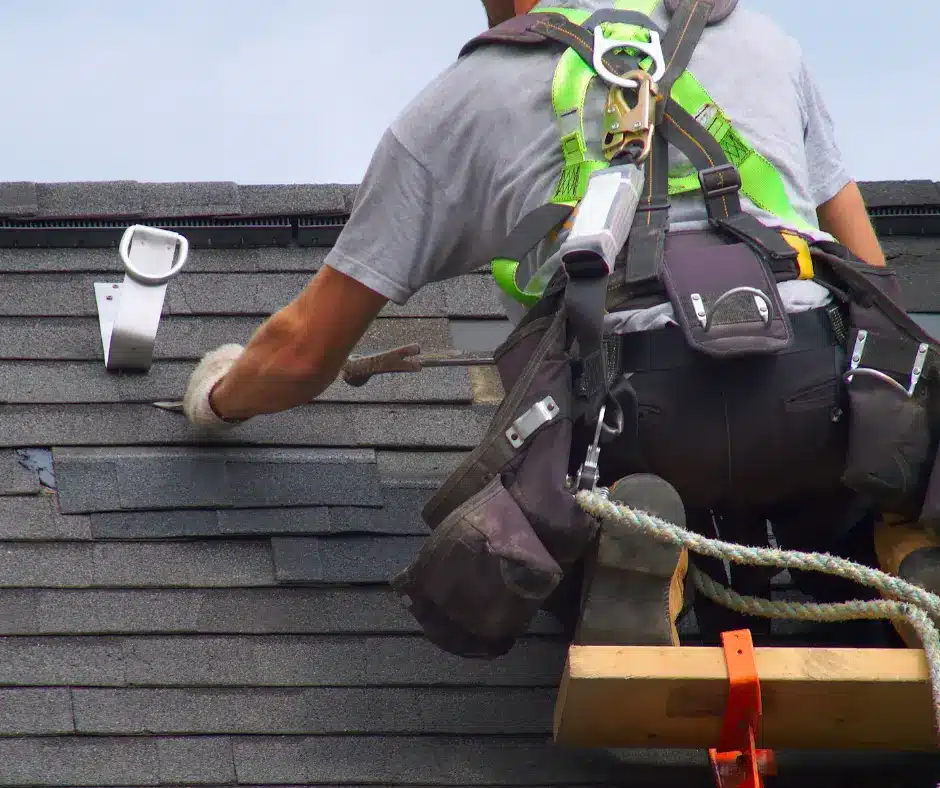
Anchorage Points
According to industry expert J.R. Hull, “anchorage points are the backbone of any fall arrest system.”
Look for anchorage points specifically designed and rated for fall protection like roof anchors, lifelines, and perimeter guardrails. Structural elements of the roof itself should never be used as anchorage points.
Inspect all anchorage points to ensure they are properly and securely installed before connecting your harness.
Additional Equipment
Other essential equipment includes shock-absorbing lanyards to connect your harness to anchorage points, retractable fall limiters, and roof guardrails.
All equipment should meet or exceed current CSA, OSHA, and CCOHS safety standards. Conduct routine inspections of all equipment according to the manufacturers’ recommendations before each use.
Damaged or worn equipment should be immediately removed from service and replaced.
By following these recommendations from the experts at All Weather Exteriors for properly using and routinely inspecting your fall protection equipment, you can work confidently on rooftops this summer knowing you have taken all necessary precautions to prevent falls.
Your safety is our top priority, so never hesitate to contact us with any questions or concerns you may have about your roof or fall protection equipment.
FAQs on Roof Safety: Your Top Questions Answered on Harnesses and More
Do I need fall protection for roof work?
According to the Occupational Safety and Health Administration (OSHA), fall protection is required whenever workers are exposed to a fall hazard of 6 feet or more. For roofing, this means that proper fall protection is mandatory. Fall protection comes in many forms, including guardrails, safety nets, and personal fall arrest systems like harnesses.
What kind of harness should I use?
The most common type of harness for roofing is a full-body harness. This distributes fall forces over your thighs, pelvis, waist, chest, and shoulders. A full-body harness is comfortable for prolonged use and provides the maximum amount of protection. Look for a harness that is specifically rated for fall protection and roofing. It should have multiple adjustment points to ensure a snug, secure fit.
How do I properly wear and use a roofing harness?
First, inspect your harness for any signs of wear or damage before each use. Then, put on the harness and secure all buckles and straps according to the manufacturer’s instructions. The harness should fit snugly but still allow a full range of movement.
Attach the lanyard or lifeline to the designated harness anchor point, usually at the back. The lanyard should be short enough to prevent falling over the edge of the roof. Move slowly and deliberately while wearing the harness, avoiding sudden movements that could cause you to trip or fall.
For the best protection, keep your lanyard attached to an anchor point at all times. When moving to a new work area, unhook from one anchor before attaching to another to avoid slack in the line.
How often should I inspect my roofing harness and equipment?
Roofing harnesses and equipment should be inspected before each use and formally inspected by a competent person at least once a year. Look for any signs of damage like fraying, cuts, or tears, and test that buckles and clips are functioning properly.
Immediately replace any damaged or malfunctioning components. Your safety depends on your roofing safety equipment, so routine inspections and maintenance should be a top priority.
Following essential roof safety guidelines and properly using fall protection equipment can help prevent serious injuries and save lives. Your roofing work may be demanding, but your safety is worth the investment of time and care. By making roof safety second nature, you’ll gain peace of mind and confidence on the job.
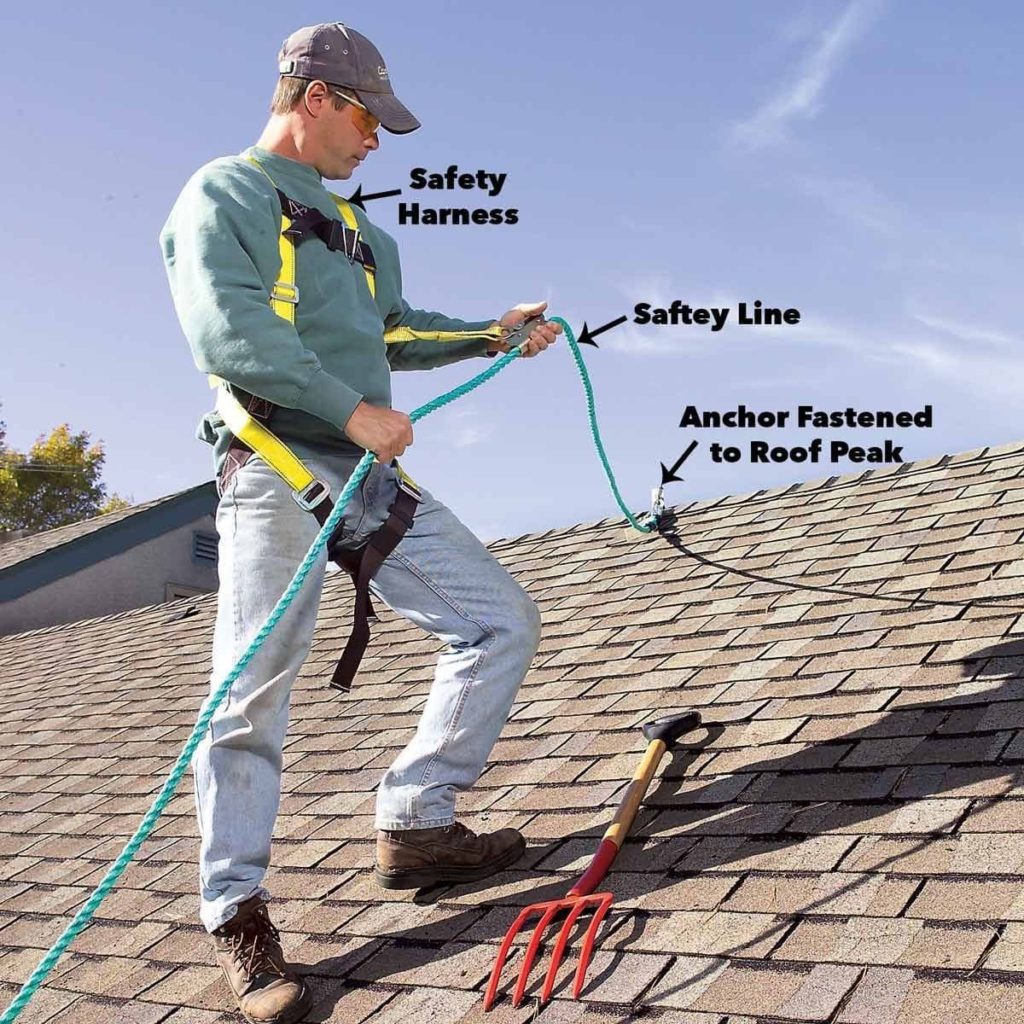
As a Winnipeg resident, keeping these roof safety tips in mind will ensure your home stays protected when the warm weather hits.
Implementing secure roof access, checking for weak points, and using harnesses and anchors at height will prevent injuries. Staying mindful of electrical hazards and talking to professionals beforehand is key.
Summer brings both fun and risk, but you can keep your roof safe with some simple precautions. Now go enjoy the sunshine knowing your home’s protected. With smart preparation, we can savor summer’s gifts without sacrificing security.
Our homes shelter what matters most, so let’s care for them properly.
Keep Your Summer Cool (and Your Roof Leak-Free) with All Weather Exteriors!
Summer’s here, and while you’re soaking up the sun, don’t forget about your roof!
After enduring harsh Winnipeg winters, it might need some TLC. All Weather Exteriors, the leading Winnipeg roofing experts, can handle all your roofing needs, from minor repairs to complete replacements.
We offer a free roof inspection, ensuring your summer stays worry-free. So, kick back, relax, and let All Weather Exteriors keep your castle weather-tight this season.
Contact us today for a free quote!
Editor’s Note: This post was originally published on June 28, 2019. The last update was made on June 13, 2024, to reflect new information and insights.

Leave a Reply
You must be logged in to post a comment.